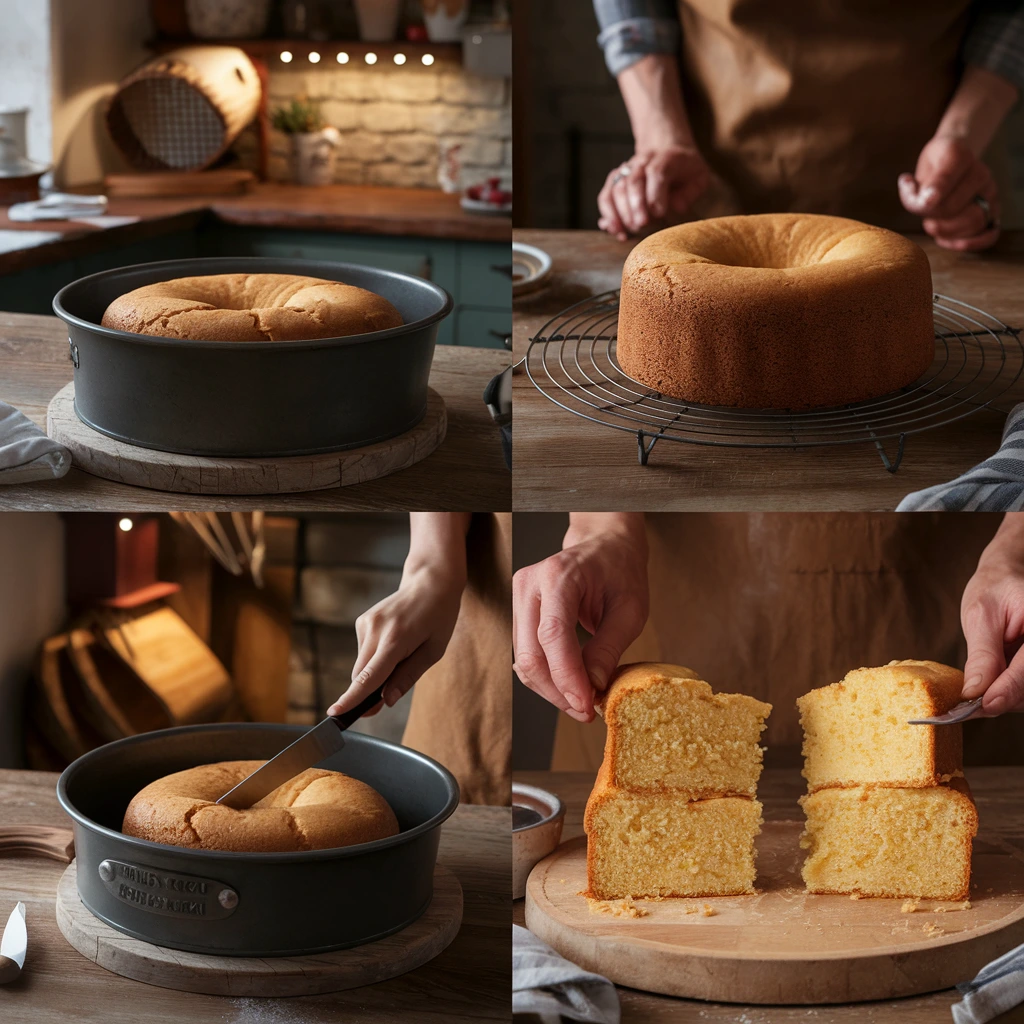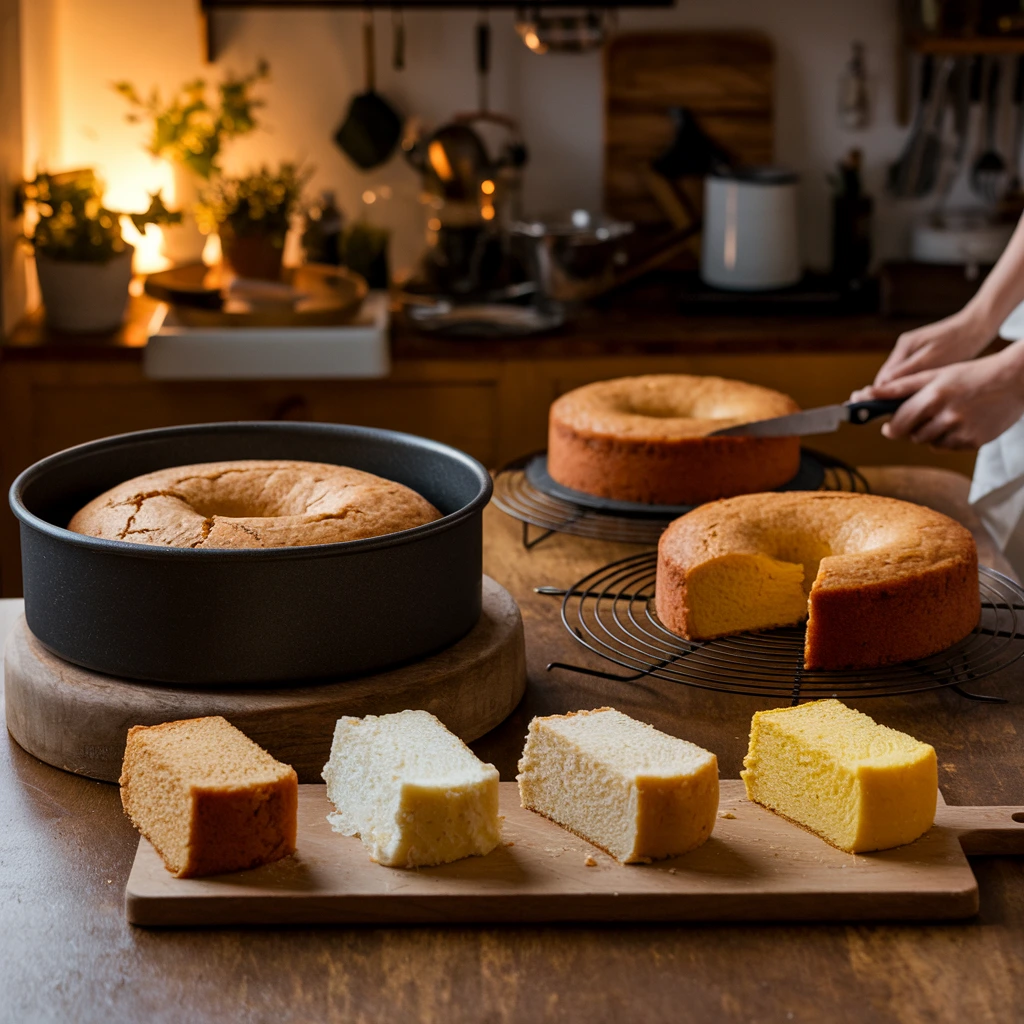Baking a perfect pound cake seems simple—until it turns out dry, dense, or stuck to the pan. If you’ve faced these frustrating baking mishaps, you’re not alone! Many bakers unknowingly make pound cake baking mistakes that ruin the texture, rise, and overall success of their cakes.
The biggest culprit? Using the wrong pan or not prepping it correctly. If you want to learn how to choose the best pan for pound cakes, check out this detailed guide on pound cake pan secrets to get it right from the start.
In this post, we’ll cover the most common pound cake baking mistakes—from improper pan selection to mixing and baking errors—and how to fix them. For expert baking techniques, check out this comprehensive guide on avoiding cake-baking mistakes from King Arthur Baking.
Using the Wrong Pan Can Lead to Pound Cake Baking Mistakes
Why the Wrong Pan Material Can Ruin Your Cake
Your pound cake pan choice affects how your cake bakes. Aluminum pans distribute heat evenly for a consistent bake, while non-stick pans absorb too much heat, leading to overbrowned edges. Glass pans retain heat too long, creating uneven baking and a tough texture. For the best results, use an uncoated aluminum pan.
Pan Size Errors That Cause Overflow or Flat Cakes
Pound cake batter expands while baking. Using the wrong pan size leads to overflow or under-rising. A 9×5-inch loaf pan is standard, while Bundt pans hold 10-12 cups of batter. Always leave 1 inch of space at the top for proper expansion.
Bundt vs. Loaf Pans: Choosing the Right One for Baking Success
Bundt pans promote even baking with their center tube, while loaf pans require longer baking times. If switching, adjust baking time accordingly—loaf cakes may need 10-15 minutes longer than Bundt cakes.
Pan Preparation Errors That Cause Pound Cake Baking Mistakes

Greasing the Pan Incorrectly Leads to Sticking Issues
Assuming a non-stick pan doesn’t need greasing is a big mistake! Butter alone can burn, leading to sticking issues. The best method? Butter + flour or a light vegetable oil spray without lecithin.
Skipping Parchment Paper in Loaf Pans Can Ruin Your Cake’s Texture
For loaf-style pound cakes, lining the pan with parchment paper prevents sticking and makes unmolding effortless. Leave “handles” on each side for easy cake removal.
How Oven Hot Spots Affect Even Baking and Cake Texture
Uneven heat can lead to overbaked edges and a raw center. Use an oven thermometer to detect fluctuations and rotate your pan halfway through baking for even browning.
Mixing and Baking Errors That Lead to Dry or Dense Cakes
Overmixing or Undermixing: A Common Pound Cake Baking Mistake
Overmixing causes too much gluten development, making the cake dense. Undermixing leads to a crumbly texture. Use the creaming method—beat butter and sugar until light and fluffy, then gradually add eggs and dry ingredients.
Baking at the Wrong Temperature Can Lead to Overbaked or Undercooked Cakes
A common mistake is baking at too high a temperature, causing a cracked top and dry crumb. The ideal temperature for pound cakes is 325°F (163°C) for a slow, even bake. Never open the oven door too early to prevent sinking.
Knowing When to Remove Your Cake from the Oven for Perfect Texture
If removed too soon, the cake collapses. If left too long, it becomes dry. Use the spring-back test—gently press the top, and if it bounces back, it’s done.
Cooling and Unmolding Mistakes That Ruin Your Cake’s Structure

Letting the Cake Cool Too Long in the Pan
Cooling in the pan for too long traps moisture, making the edges soggy. Let the cake rest for 10-15 minutes before transferring it to a cooling rack.
Forcing the Cake Out Too Soon
If your cake sticks, don’t force it! Tap the bottom of the pan, run a plastic knife around the edges, or place the pan over a warm towel for a few minutes before flipping.
Storing the Cake the Wrong Way
Improper storage dries out even a perfectly baked cake. Avoid wrapping it too tightly in plastic, as this traps moisture and ruins texture. Instead, store in an airtight container at room temperature for up to 3 days or freeze for longer.
Conclusion
Small pound cake baking mistakes can ruin a great cake, but avoiding these errors will help you bake soft, moist, and perfectly textured cakes every time. Choose the right pan, prepare it correctly, and follow proper baking and cooling techniques for consistent, bakery-quality results.
For more baking tips, check out this expert guide on fixing cake-baking mistakes to perfect your skills. Happy baking! 🍰

